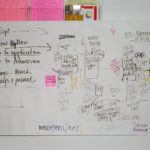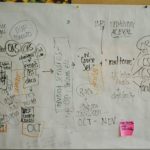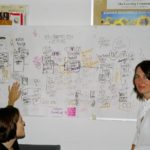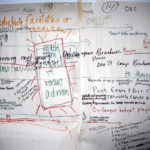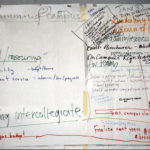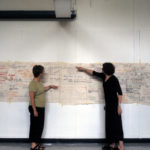Working at a university, I used work process mapping in my workplace with office colleagues, beginning in work we did every day. This work went on in several academic programme advising offices across campus, one of which I headed, and advisors were being asked to provide input for a university-wide process to plan the reorganization of advising work. Presenting the map and talking through it to the provost, deans and advisors showed them the complex year-round academic advising process from the view of the front line advisors’ work with students. It laid out the ground for advisors to participate in planning institutional change and led to improvements in the texts and coordination of the Registrar’s Office work and advisors’ work.
After the work with academic advisors, the interim director of Athletics asked me to do a mapping session with coaches and programme staff. I knew nothing about what they did. I did a preliminary sketch map the night before based on what a few staff sent as descriptions of their work and I identified up front where I saw, like in our work in Advising, ‘crunch points’ happened in the yearly cycle. Prompted in the session, both coaches and programme staff spoke about how an issue and ongoing tension about job related ‘admin. paperwork’ occurred at that point if coaches (due to having winning teams) were at away games and unable to do the required share of ‘administrative work’ that was in their job descriptions.
Made visible and talked about, tension was diffused. The map was hung in the wall in the building for staff to add to it, and the acting director added the issue to the tasks in the job description for the incoming director to take up.
